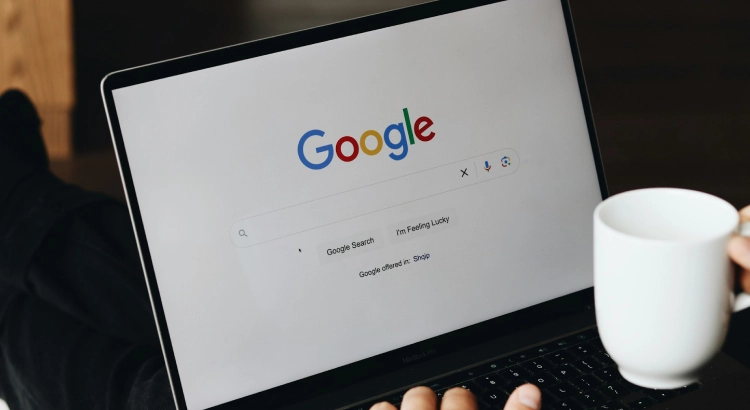Learn how to rank higher on Google to boost your online visibility and attract more organic traffic to your website. By applying effective strategies, you can secure better positions in SERPs and connect with your target audience more effectively. This article offers actionable tips to help you achieve lasting success. Implement these methods to enhance your website’s performance and visibility.
Tips to Get a Higher Google Ranking
Take a look at these proven strategies to improve your website rankings and drive more organic traffic to your website. By following these tips, you can enhance your site’s performance and secure a stronger presence in search results.
1. Align Your Content with Search Intent
Understanding and meeting search intent is fundamental to improving your rankings in SERPs. Search intent refers to the reason behind a user’s query, and catering to it ensures your material aligns with what users are looking for.
Google prioritizes results that address users’ needs effectively. To identify a keyword’s search intent, search it on Google and analyze the top-ranking pages. For instance, a search for “best protein powder” displays many product roundups, indicating that users are seeking expert reviews and comparisons.
To rank well, create similar content while ensuring it stands out with unique insights and an excellent user experience. Follow these guidelines to optimize your material:
- Use clear headers to help readers quickly grasp the main points.
- Adopt simple, conversational language that is easy to understand.
- Ensure your material is accurate, original, and comprehensive, covering all the important points addressed by competitors.
If fulfilling a particular intent isn’t feasible, consider targeting a different keyword that better matches your expertise or objectives.
2. Target Low-Difficulty Keywords
Low-difficulty keywords offer a realistic chance of ranking higher, especially if your site is relatively new or lacks high domain authority. Keyword difficulty measures how competitive a term is.
To find low-difficulty keywords:
- Use keyword research tools like Google’s Keyword Planner or Ahrefs.
- Look for terms with lower competition but significant search volume.
Prioritize long-tail keywords, as they often have less competition and attract highly targeted traffic.
3. Focus on Originality and Unique Insights
Originality is a hallmark of high-quality content. Adding unique value to your material can help you stand out and increase your chances of ranking higher.
Here are the ways to make your content unique:
- Include personal experiences or expert opinions.
- Conduct original research and share the findings.
- Create custom visuals, such as infographics and videos.
- Add insights or ideas not covered elsewhere.
Unique content not only appeals to readers but also signals to Google that your page offers fresh perspectives, improving its chances of ranking.
4. Optimize for Prominent SERP Features
SERP features are enhanced elements that appear in search results. Ranking in them can significantly improve your website visibility.
For instance, Google sometimes displays an AI Overview at the top of SERPs. If you optimize your content for AI Overviews, you increase your chances of being featured.
Another prominent feature is the Featured Snippet, which often appears at the top of the page when triggered. Featured snippets are designed to provide a direct response to the user’s query, and you can optimize for them by answering questions concisely within your material.
It’s important to note that Google Search Console doesn’t provide data on SERP features, so you may need to rely on other tools to track your performance.
5. Improve Your On-Page SEO
On-page SEO involves optimizing individual webpages to help search engines understand their content and value.
A key component of on-page SEO is strategically using keywords. Start by selecting a primary keyword that reflects the main topic of your page. Then, incorporate this keyword naturally into the following elements:
- Title tag: This is the page’s HTML title, shown in SERPs. It should accurately describe your page while encouraging clicks from users.
- Meta description: The HTML description that appears below the title in SERPs. While it doesn’t directly impact rankings, it should clearly explain what the page is about.
- H1 tag: The main heading of your page, which should align closely with the title tag.
- Alt text: Descriptions of images in HTML that help search engines and visually impaired users understand what the images show.
- URL slug: The part of the URL that uniquely identifies your page. Keep it concise and descriptive.
- Body content: Use the primary keyword early in the first paragraph and throughout the content, where appropriate.
Secondary keywords—those related to the primary keyword—should also be included in subheadings, body content, and alt text when relevant.
These optimizations follow SEO best practices and are informed by analyses of top-ranking competitors, guiding you on which pages to prioritize for improvements.
6. Build Backlinks from Authoritative Sites
If your content quality is on par with your competitors but you’re still not ranking as high, it might be due to the need for more backlinks. Google views backlinks as a sign of your content’s authority, and links from reputable sites (such as Forbes or Insider) indicate trustworthiness.
Here are some ways to acquire backlinks from authoritative sites:
- Reach out to content creators who could benefit from sharing your material with their audience.
- Use the Brand Monitoring app to identify unlinked mentions of your brand and ask creators to add a link.
- Leverage Backlink Analytics to find broken links on your or your competitors’ sites, then contact creators to replace them with functional links to your content.
Securing a few high-quality backlinks can help improve the ranking of a specific page. However, increasing your overall website authority and visibility will require continuous effort.
7. Improve Page Performance for Better User Experience
Google takes Core Web Vitals into account when determining site rankings because these performance metrics significantly impact user experience. Improving these metrics will not only enhance user satisfaction but also boost your rankings.
- Largest Contentful Paint (LCP): This measures how long it takes for the largest element on the page to load.
- Cumulative Layout Shift (CLS): This measures how much elements shift on the page as it loads.
- Interaction to Next Paint (INP): This tracks how long it takes for a page to respond to user interaction.
You can assess your Core Web Vitals using Google’s PageSpeed Insights tool, which also offers recommendations in the “Diagnostics” section of your report.
Common issues that affect performance include large image files, unoptimized code, excessive redirects, lack of browser caching, and render-blocking JavaScript. Addressing these issues can significantly enhance your site’s performance and user experience.
8. Conduct a Technical SEO Audit
A technical SEO audit helps identify any underlying technical issues that may prevent your website from ranking as high as it should. Conducting an audit can reveal critical issues such as:
- Crawling and Indexing: These are essential processes Google uses to discover and store your content.
- Duplicate Content: This can confuse search engines and hinder ranking.
- HTTPS Encryption: Crucial for website security and user trust.
- Mobile Usability: Given the importance of mobile-friendliness for ranking, it’s essential to ensure your website is fully optimized for mobile devices.
- Core Web Vitals: These page experience metrics are now a ranking factor, affecting how your site performs in SERPs.
Addressing these technical issues can lead to improved site rankings. You can identify the most pressing problems through Google Search Console, which provides insights into crawling, indexing, and other technical aspects of your site.
9. Optimize Your GBP for Local SEO
For location-based businesses, optimizing your Google Business Profile (GBP) is a key step in improving your local SEO and increasing visibility in local search results. A well-optimized GBP can help drive both online traffic and foot traffic to your business.
Here’s a quick checklist for optimizing your GBP listing:
- Verify your listing to ensure it’s accurate and official.
- Provide complete and accurate business details, and keep them updated.
- Incorporate local keywords into your business description to improve relevance.
- Encourage satisfied customers to leave positive reviews on your profile.
- Actively respond to Google reviews to engage with your customers and show you value their feedback.
The GBP platform also allows you to track valuable data, such as the queries people use to find your business and performance metrics like the number of clicks your listing receives.
10. Get Consistent NAP Citations
Consistent NAP (Name, Address, Phone Number) citations can significantly improve your local ranking by reinforcing your business’s accuracy and prominence in online directories.
Ensure that your business is listed on trusted, relevant directories and that the NAP details are identical across all platforms. This consistency strengthens your business’s credibility and helps search engines validate your information, ultimately improving your position in SERPs.
Conclusion
Ranking higher on Google requires a strategic mix of content optimization, technical SEO, and user experience improvements. By aligning your material with user intent, targeting the right keywords, and building a robust backlink profile, you can improve your website’s visibility and attract more organic traffic. Regularly audit your website and adapt to evolving SEO trends to stay ahead in the competition.


